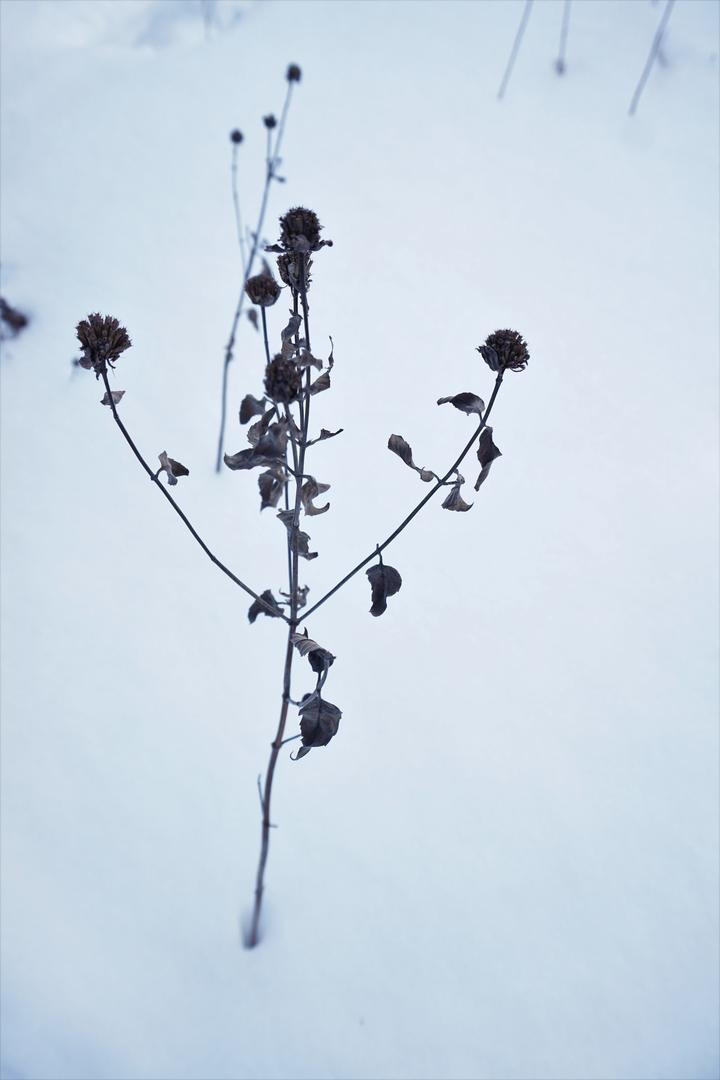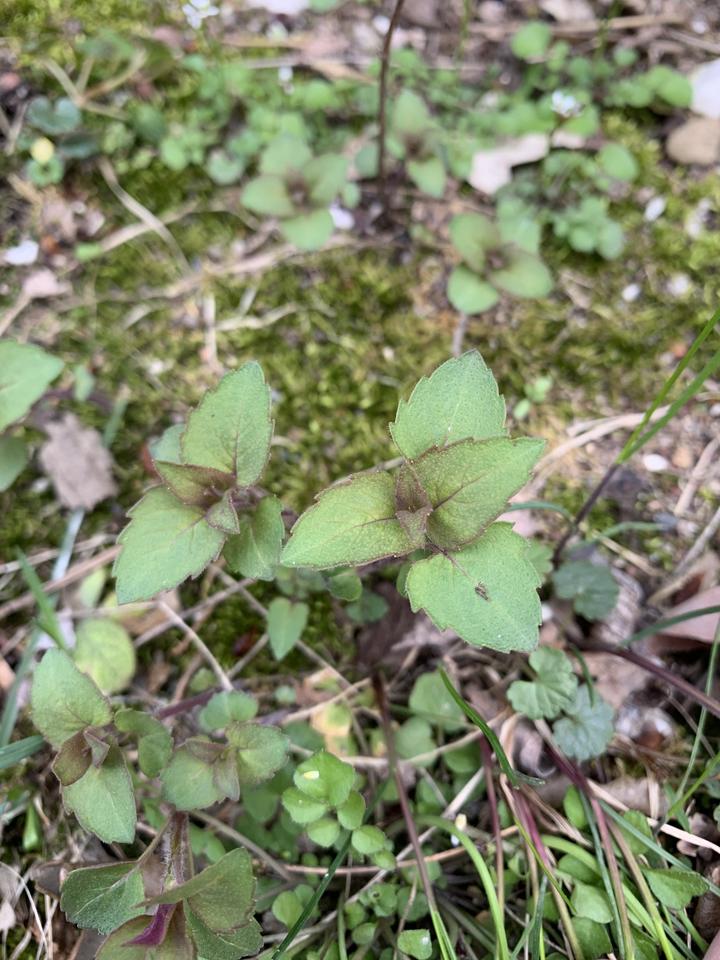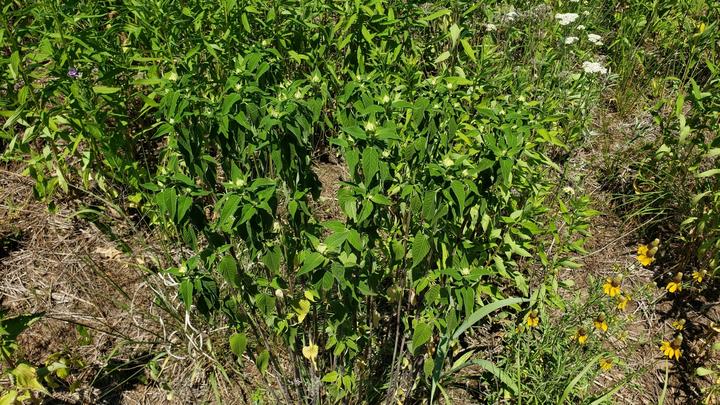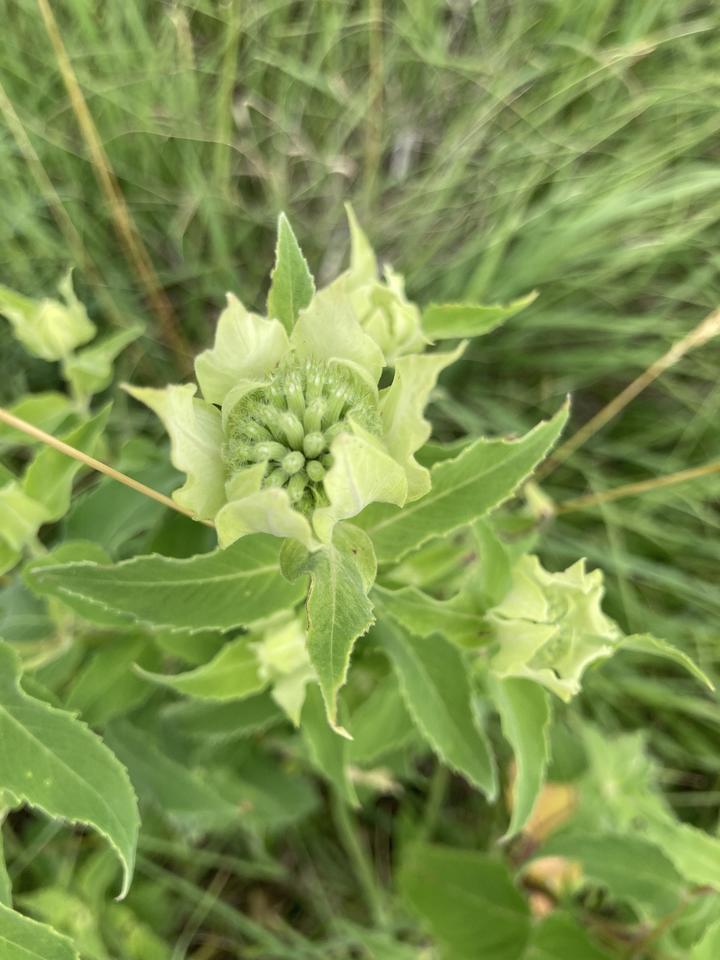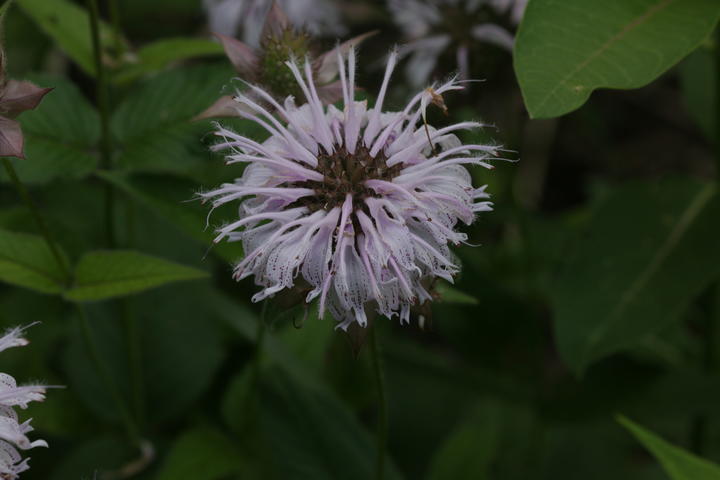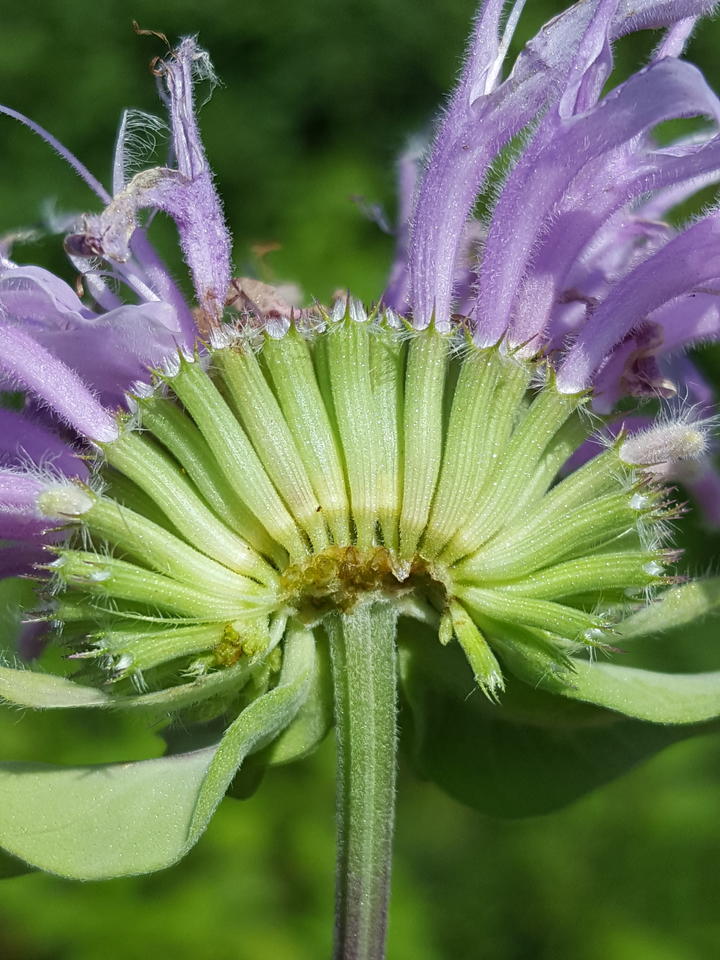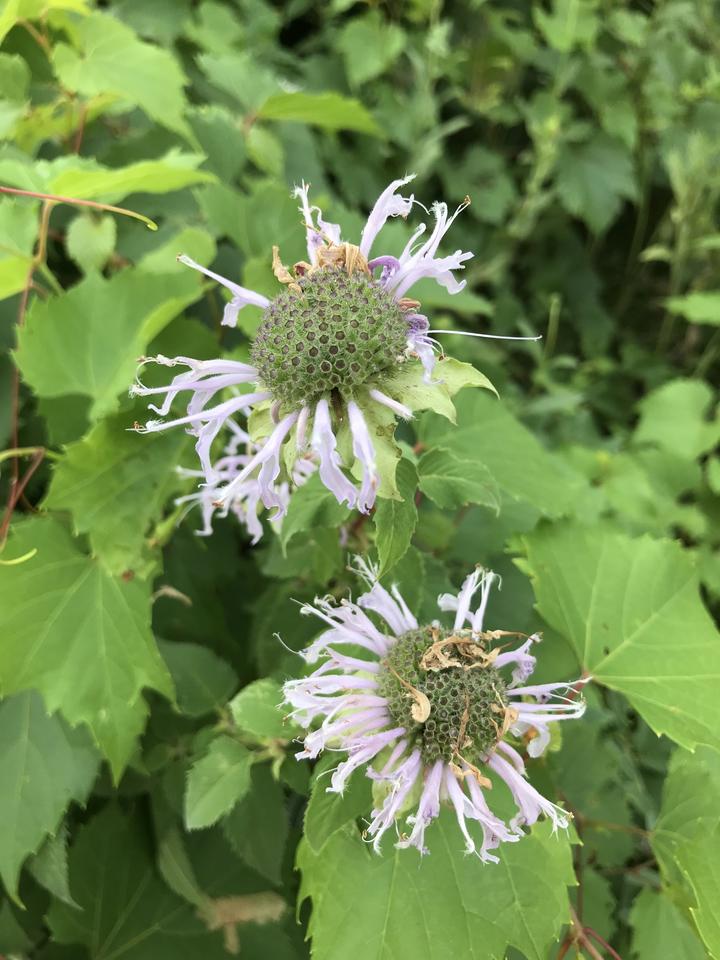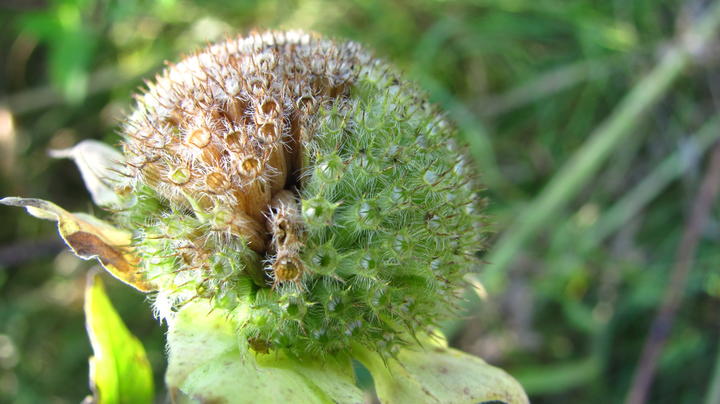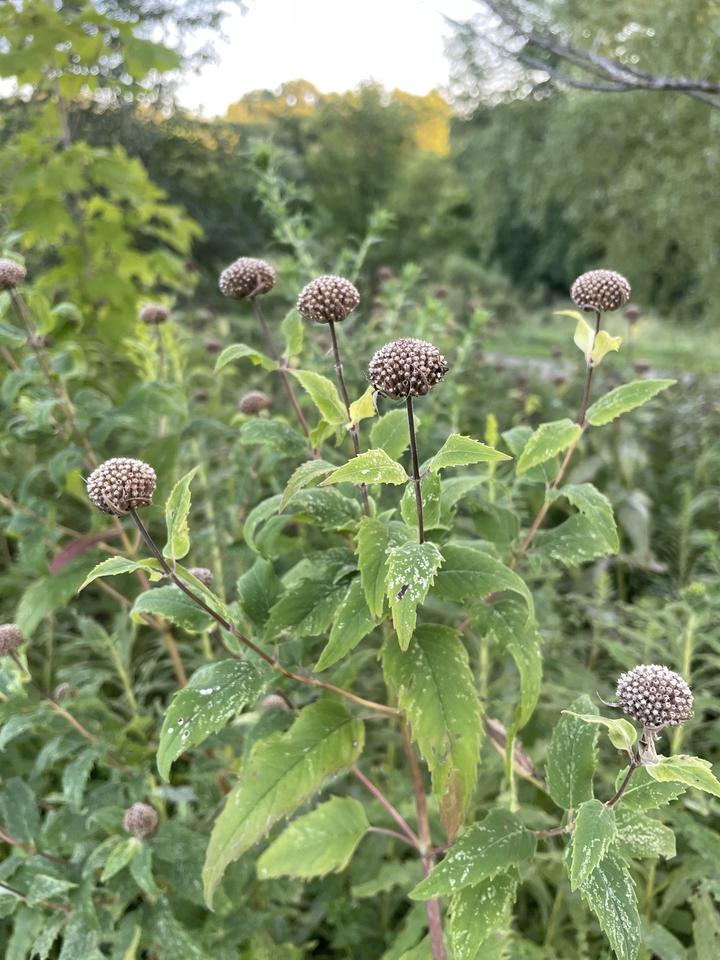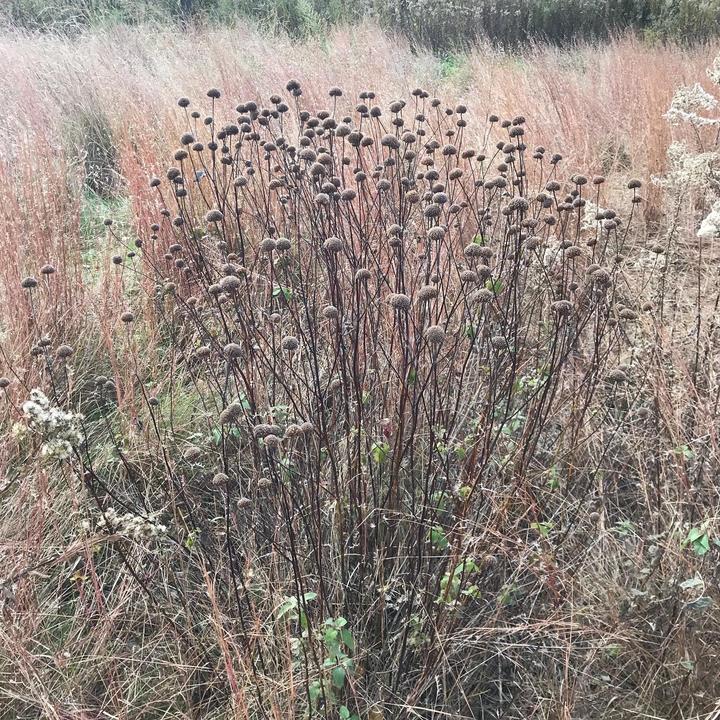More names for this plant
The Dakota and Anishinaabe were among the earliest people to name Minnesota’s plants and animals, as well as to understand them in relation to Minnesota’s climate and seasons. Those original names are still in use, and several are included on the Season Watch website. However, complete translations were not available.
Latin (or scientific name): Monarda fistulosa
The scientific community has a convention of assigning agreed-upon Latin names to every kind of organism. Using scientific names helps people communicate confidently about the same organism and organize lifeforms based on how closely related they are.
More common names: Beebalm, Mintleaf beebalm, horsemint, Oswego-tea
Page contents
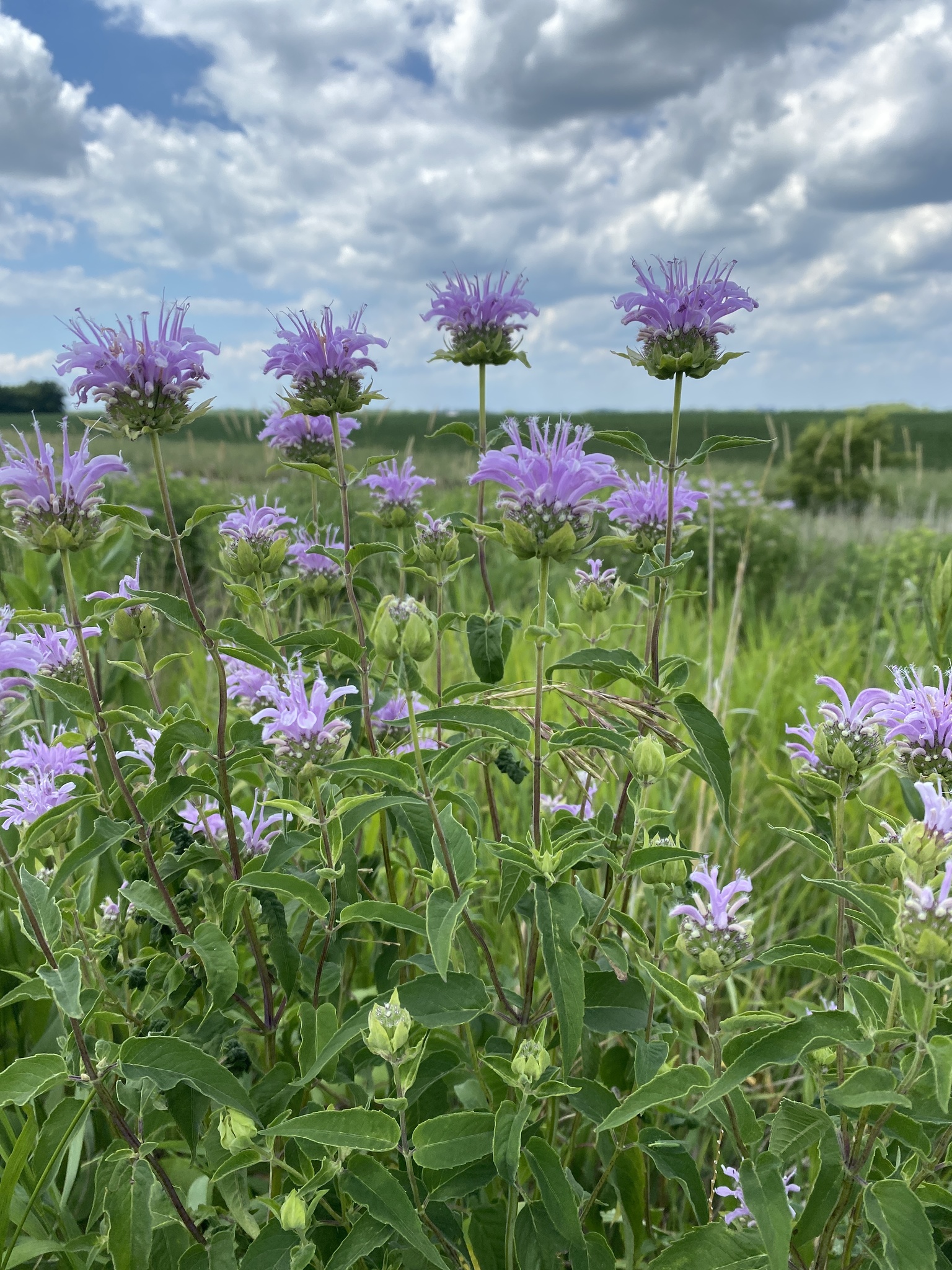
June 30, 2021, Lincoln County, Minnesota
Photo © abahe, some rights reserved (CC-BY-NC)
iNaturalist observation
About wild bergamot
- Wild bergamot is an herbaceous perennial plant that produces clusters of pink or purple flowers.
- Like many plants in the mint family, the stem of wild bergamot is square-shaped. If you roll the stem between your fingers, you will feel the ridges of the square.
- Wild bergamot is a key food source for pollinators, including native bees.
- Wild bergamot is an important plant for prairie restoration.
- Fun fact: The leaves are aromatic and are cultivated to make mint tea.
Visual guide to phenology
Watch for the appearance of leaves, flowers, and fruits. Take notice of when flowers open and fruits ripen.
Note to observers
This page explains general clues to watch for when observing wild bergamot phenology. However, this page does not explain how to identify this plant or collect data in a standardized way.
- For help with identification, see Minnesota Wildflowers.
- For guidance on collecting data, see Nature’s Notebook.
Graphs and historical data
Note: The Orientation Center provides a map, as well as information on reading graphs; interpreting summary statistics, who collected the data and how; and how to download datasets for independent exploration.
Flowering
- Earliest: June 21 (occurred in 1991)
- Average: July 14
- Latest: July 24 and 25 (occurred in 1960 and 1982)
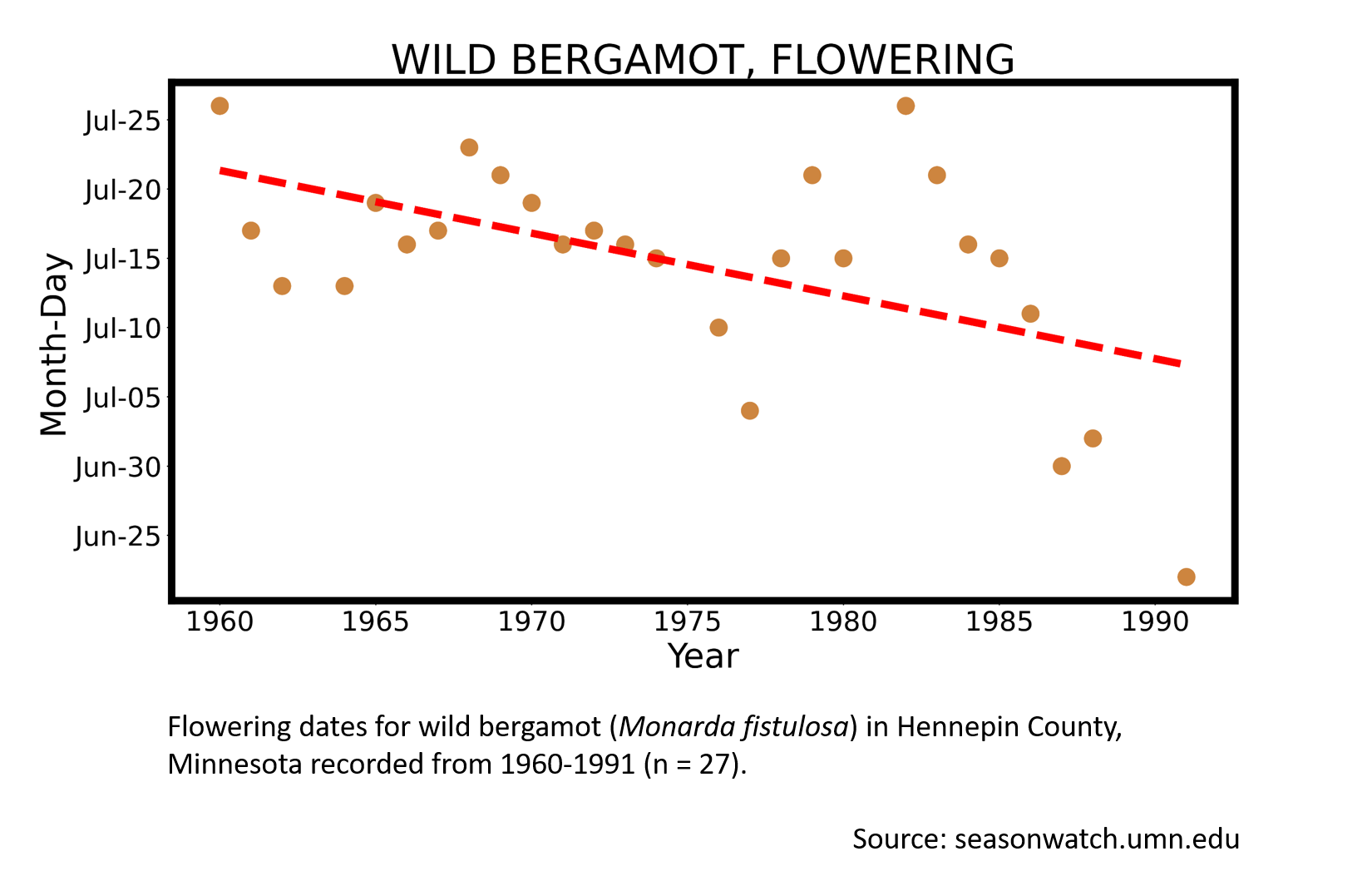
First flower
- Earliest: June 28 (occurred in 2007)
- Average: July 11
- Latest: July 29 (occurred in 1997)
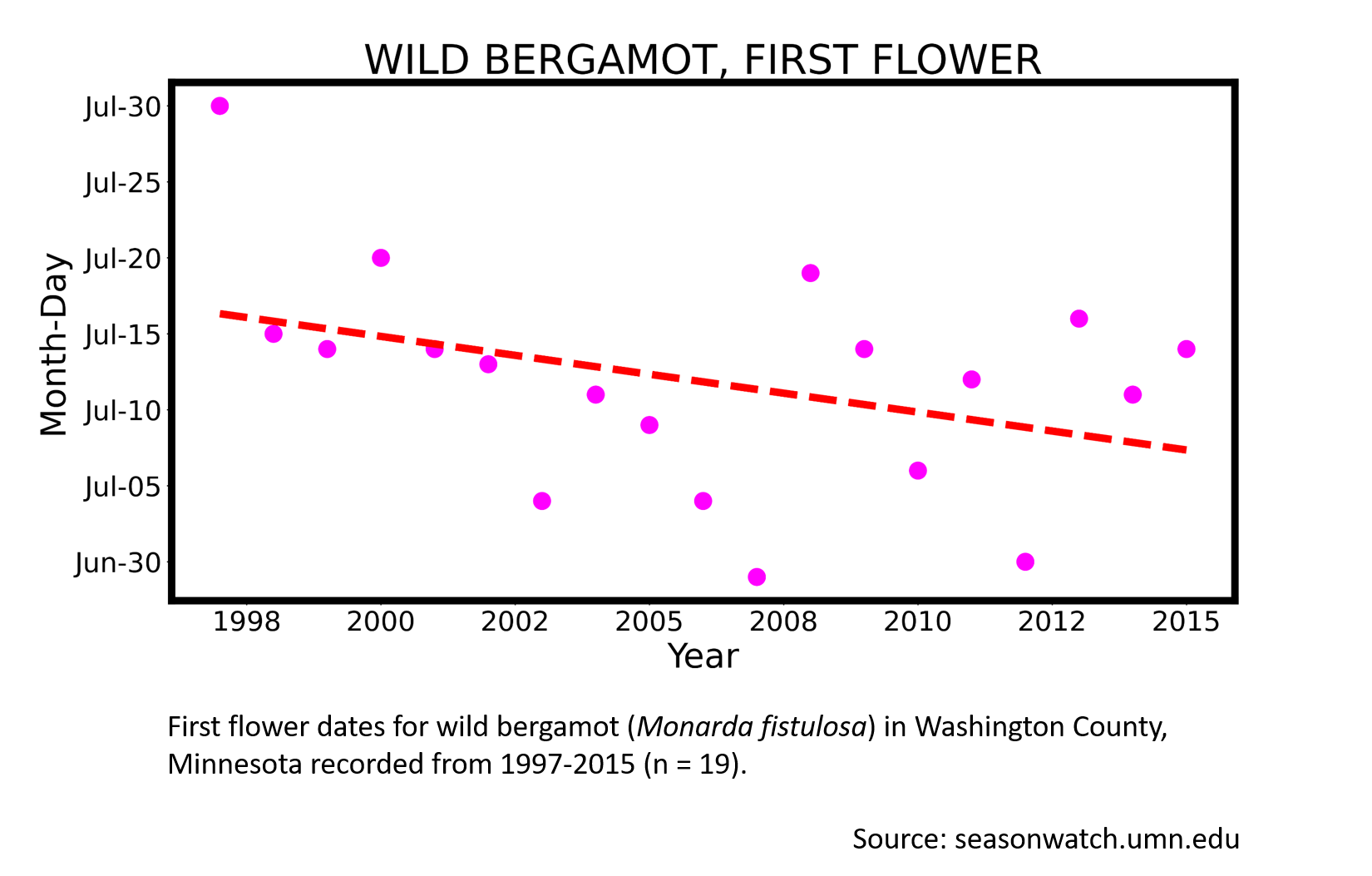
Last flower
- Earliest: July 24 (occurred in 2003)
- Average: August 13
- Latest: August 28 (occurred in 2008)
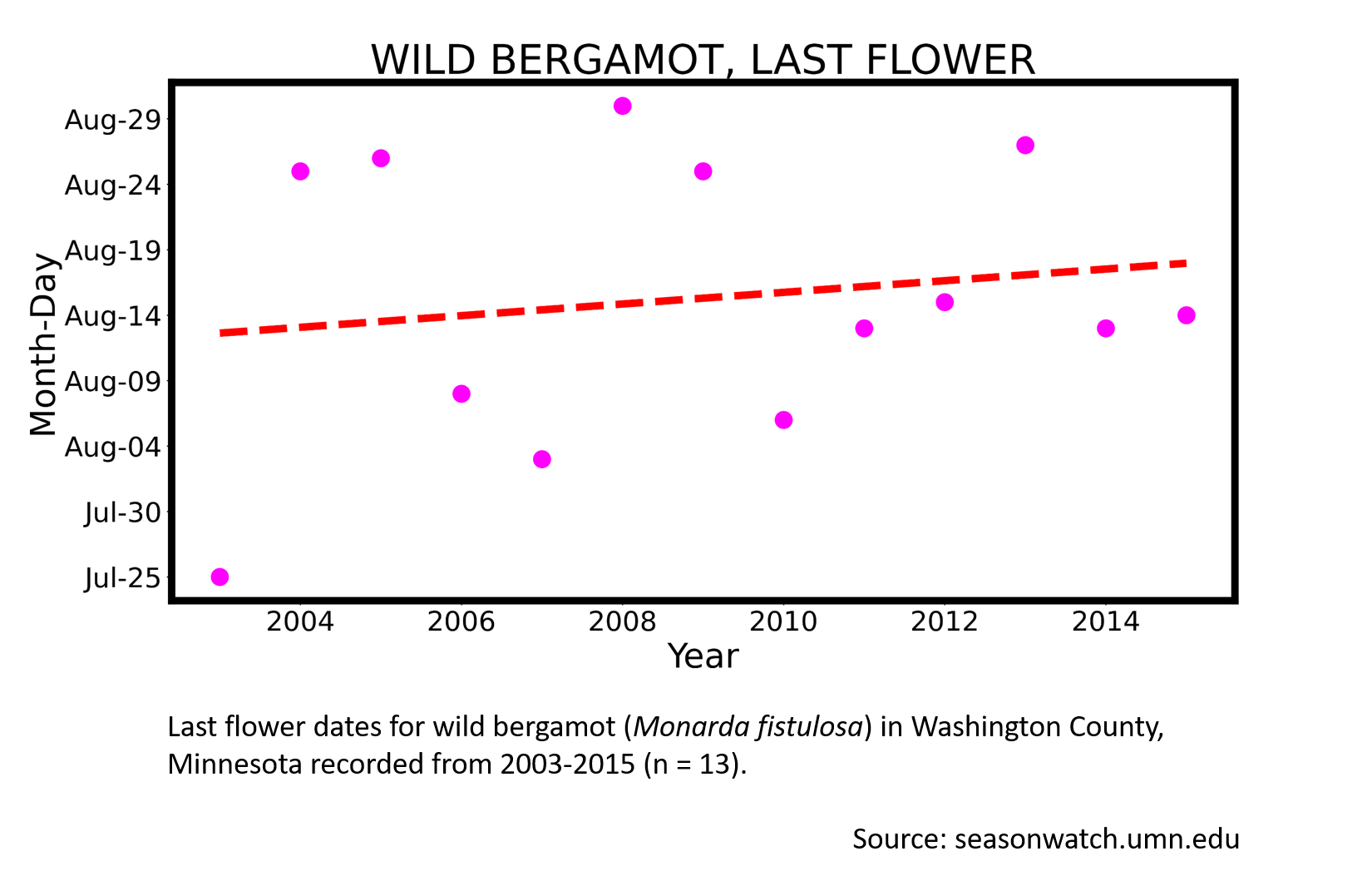
Keep exploring Season Watch
Keep exploring Season Watch
Co-author: Audrey Negro, Minnesota Master Naturalist
